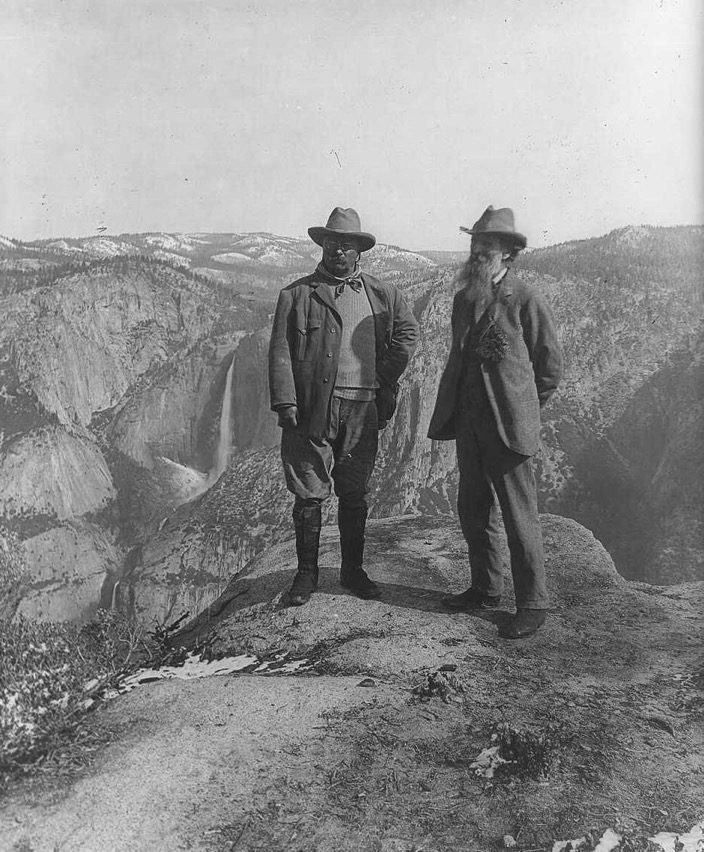President Theodore Roosevelt was one of the most powerful voices in the history of American conservation. He was an ardent and active hunter and quickly developed a strong spiritual empathy with the wilderness and conservation.
Enthralled by nature from a young age, Theodore Roosevelt cherished and promoted the USA’s landscapes and wildlife and the need to manage and preserve.
He was born in New York City and was sickly as a child, but nevertheless took to the outdoors doing hiking, rowing, swimming, riding, bird-watching, hunting and taxidermy.
After becoming US president in 1901,Theodore Roosevelt used his authority to establish 150 national forests, 51 federal bird reserves, four national game preserves, five national parks and 18 national monuments on over 230 million acres of public land.
Today, the legacy of Theodore Roosevelt is found across the United States of America. There are six national park sites dedicated, in part or whole, to the hunter- conservationist president.
Wilderness Spirit
Theodore Roosevelt ’s speeches reflected his philosophy.
“There is a delight in the hardy life of the open. There are no words that can tell the hidden spirit of the wilderness that can reveal its mystery, its melancholy and its charm. The nation behaves well if it treats the natural resources as assets which it must turn over to the next generation increased and not impaired in value, he said in a speech in Osawatomie, Kansas, in 1910.
One of the most celebrated camping trips in American history occurred in 1903 when President Roosevelt spent several days exploring Yosemite with renowned conservationist John Muir. They had similar aspirations and discussed the importance of preserving unique landscapes and wildlife. Following that trip, Roosevelt worked to make Muir’s Yosemite dream a reality by eventually adding Yosemite Valley and the Mariposa Grove to Yosemite National Park.
Don’t Interfere
“I want to ask you to keep this great wonder of nature as it now is. I hope you will not have a building of any kind, not a summer cottage, a hotel or anything else, to mar the wonderful grandeur, the sublimity, the great loneliness and beauty of the canyon. Leave it as it is. You cannot improve on it. The ages have been at work on it and man can only mar it. What you can do is to keep it for your children, your children’s children, and for all who come after you, as one of the great sights which every American if he can travel at all should see,” he said at the Grand Canyon, in 1903
And in a speech at Yellowstone National Park in 1903 Theodore Roosevelt described the Yellowstone Park as “something absolutely unique in the world” and said its preservation was noteworthy in its essential democracy in that it was created, and was administered, “for the benefit and enjoyment of the people”.
“The only way that the people as a whole can secure to themselves and their children the enjoyment in perpetuity of what the Yellowstone Park has to give is by assuming the ownership in the name of the nation and by jealously safeguarding and preserving the scenery, the forests, and the wild creatures.”
The Teddy Bear
A quirky sidelight is that the Teddy Bear was called such in honor of President Theodore Roosevelt. While on a bear hunting trip Roosevelt’s hunting party cornered a black bear and tied it to a willow tree and suggested that the President shoot it. “Teddy” Roosevelt was obviously disgusted and swathe idea as extremely unsportsmanlike. He refused to kill the bear.
Political cartoonist Clifford Berryman heard the story and drew a cartoon celebrating the President’s decision. A Brooklyn candy shop owner saw the cartoon and decided to create a stuffed toy bear and dedicate it to the president who refused to shoot a bear. He called it Teddy’s Bear and children have been enjoying them ever since.
© The park that bears his name -Theodore Roosevelt National Park, north Dakota, USA

© Theodore Roosevelt and John Muir Yosemite National Park

